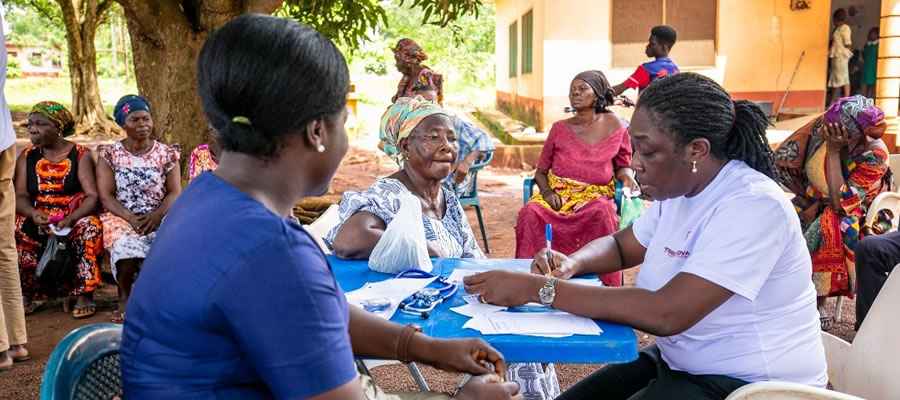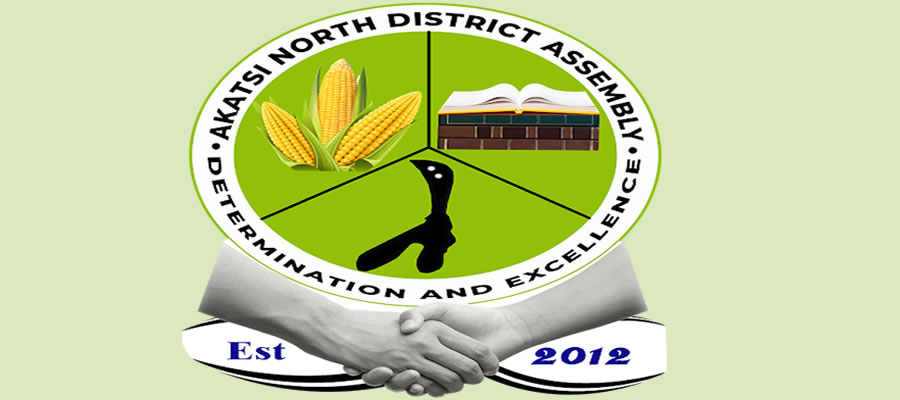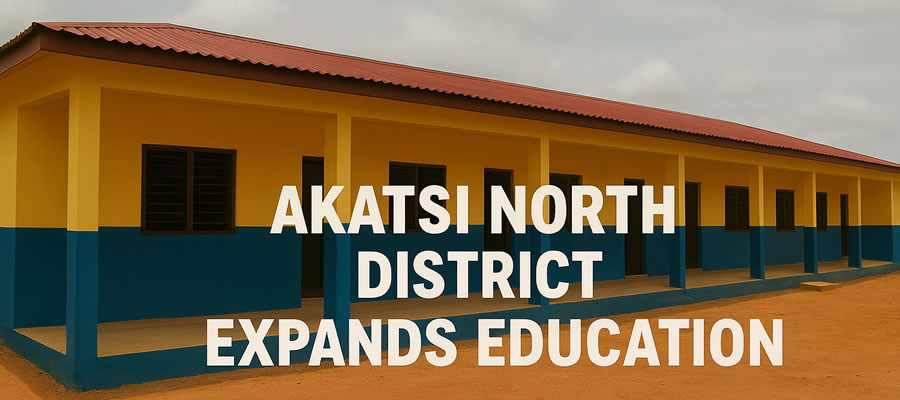
Housing Stock
Total stock of houses in the region is 399,953, of which the highest proportion is located in the rural areas (72.2%) compared with urban areas (27.8%). The district distribution shows that Ho Municipality (13.5%) has the highest proportion of houses, followed by Hohoe Municipality (11.5%) and Akatsi District (7.6%). Together these three districts share about 32.6 percent of all houses in the region. Meanwhile, North Tongu (6.8%), Ketu South (6.3%), Ketu North (5.9%) and Krachi West (5.5%) together have only 24.5 percent of houses and less than 20.0 percent of households in the region.
The data further show that the average population per house in the region of 5.3 is lower than the national average of 7.3. There are wide variations in population per house by district, ranging from a low of 3.8 in Akatsi District to a high of 8.4 in Nkwanta North District. Overall, districts with the largest share of the region?s housing stock also account for the largest share of households. In essence, districts with a larger than average regional share of houses also have a larger than average size of household. Also worth noting is that the average household size in the region does not vary much among the districts. For the region as a whole, the average household size is 4.2 with variation from 3.6 in Ho Municipality to 6.4 in Nkwanta North.
Type of dwelling by district
A total of 550,006 dwelling units were identified in the Volta Region during the 2010 census, both occupied and unoccupied. The main type of dwelling is the separate house (45.8%). A room in a compound house is the second most common type of dwelling (41%), followed by the semi-detached unit (6.5%). Flats/apartments are not common (1.5%). Makeshift dwelling units such as tents (0.2%), kiosks and containers (0.4%), attachments to shops or offices (0.4%) together constitute 1.0 percent of dwelling units.
Household room occupancy
In examining the housing conditions of the region, the census gathered data that could be used to determine the extent of overcrowding of households occupying dwelling units. As is internationally accepted, the ideal occupancy level is two persons per room, and any figure above this threshold is regarded as evidence of overcrowding, which has both health and social implications. The region does not as yet face a critical overcrowding situation, but the potential exists if housing policy measures and regulations do not take into account sleeping room occupancy as an important factor in the planning and provision of housing.
The number of households in one sleeping room and not sharing is smaller in rural (41.6%) than in urban localities (52.2 %). The proportion of households occupying more than one sleeping room is more than 50 % throughout the districts and in the rural areas. The proportion is highest in Nkwanta North (77.8 %) and lowest in Ho Municipal (45.9%).
Rooms Household Occupy
The number of sleeping rooms in the region appears to follow the same pattern as the room occupancy rates but with some notable deviations. Single rooms constitute 29.6 % of the total. Two rooms constitute 32.9 percent, followed by three rooms (16.1%) and four rooms (9.0 %).
The remaining households are in five rooms (4.4%), six rooms (3.2%), seven rooms (1.8%), eight rooms (1.2%), and nine or more rooms (1.9%). This means, 87.6 percent of households in the region live in 1-4 room dwelling units beyond which the proportion decreases. The highest proportion of households in all districts occupies two-room dwellings, varying from 22.0 percent in Nkwanta North to 39.9 percent in Akatsi.
In Ketu in the south, and Ho and Kadjebi in the north, the single-room dwelling is the second commonest dwelling unit, ranging from 13.8 percent of households in Nkwanta North to 36.6 percent in Ketu South. The three-room unit is the third commonest dwelling unit for households and is highest in the two northern districts, Krachi East (21.5%) and Nkwanta North (20.4%). In all districts, the proportion of households occupying five rooms or more is 12.5 percent.
Households and Tenancy by District
Ownership of Dwelling Units
Nearly two thirds of households in the region own the dwelling units they occupy. Relatives who are not household members own 18.6 percent of available housing units, while other private individuals own 16.4 percent of the housing units in the region. Keta is the only district in the region with a larger than average ownership by relatives who are not household members (27.6%) compared to the regional average (18.6%).
Kadjebi has the largest proportion of other private individual owners (23.9%) as well as ownership by private employers (2%) compared to the regional average (0.7%). Ho has a private employer ownership rate that is less than half the rate for Kadjebi. Provision of dwelling units by private employers is low in the region as a whole (0.7%). In fact, in all districts, the proportion of private employer-owned dwellings is almost the same as the regional average.
Tenure/holding arrangements
Around 59.0 percent of housing units in the region are owner occupied. The rates in the districts appear to conform to the regional pattern except for Nkwanta North (83.7%), Krachi West (77.0%), and Krachi East (70.6%), where the rates are far in excess of the regional average and in Kadjebi, where the proportion is as low as 47.3 percent. The other types of tenure in the region include rent free (19.4%) and living in rental units (20.8%).
The rent-free tenure system is less common in Nkwanta North (5.9%) and Krachi East (9.0%) than in any other district in the region. Districts with higher-than-average rent-free tenures are South Tongu (22.6%), Kadjebi (24.3%), Ketu North (25.7%), Keta (24.1%) and North Dayi (23.4%). Ho Municipality has the highest rental unit tenure in the region (29.0%) compared to the regional average (20.8%). Three other districts with higher than average renting are Kadjebi (27.7%), Hohoe Municipality (27.6%) and Jasikan (24.1%).
Main source of drinking water
Households in the region derive their drinking water from diverse sources but the five main sources are river/stream, well, standpipes, dugout and borehole, which together constitute the main sources for 91.2 percent of households. Rainwater is more the common source of drinking water for households in Ketu North and AdakluAnyigbethan in any other district. Meanwhile, dugouts are common in households in Akatsi, North Tongu and Krachi East.
Boreholes are similarly common in households in North Dayi, Biakoye and Nkwanta South (47%), suggesting a distribution pattern that follows the rainfall pattern in the region. Water piped into homes constitutes just 7.4 percent of all the water sources in households in the region and is shared largely by households in Ho (19.1%), South Dayi (11.1%), Hohoe (10.9%) and Keta (9.0 %). Households in Krachi East (0.6 %) and Nkwanta North (0.9%) have the two lowest proportions in the region in terms of water piped into homes.
Main Source of Household Lighting
The main sources of lighting for households in the region are electricity (49.6%) and kerosene lamps (40.4%). There are marked differences in the use of these two sources for lighting across districts. While the majority of households in Ketu North (63.7%), Akatsi (60.9%), Keta (53.1%) and Ketu South (50.9%) use kerosene lamps as the main source for lighting, relatively low proportions of households use this source in Hohoe (29.7%), Krachi East (28.5%) and Ho (24.5%).
Ho Municipality the highest proportion of households using electricity (mains) for lighting (68.4%), followed by Hohoe Municipality (63.7%) and North Dayi (62.4%). The use of mains electricity is also higher than the regional average in South Dayi (55.6%) andJasikan (50.1%). Districts with low-to-medium use of electricity include Ketu South (45.5%), Akatsi (33.7%), and North Tongu (36.7%). It is pertinent to note that the districts most affected by the damming of the Volta River have low proportions of households with access to electricity. These districts are North Tongu (36.7%), South Tongu (39.1%), Nkwanta South (37.3%), Ketu North (33.2%) and Akatsi (33.7%).
Main Source of Cooking Fuel
The main sources of cooking fuel for households in the region. The highest proportion of households uses wood as main source of cooking fuel (57.1%), followed by charcoal (29.6%), and gas (9.3%). The use of the other sources such as kerosene, sawdust and electricity is negligible, at less than 1 percent for each source. A similar pattern of main source of cooking fuel is observed across districts.
However, there are very high percentages of households using wood as main source of cooking fuel in Nkwanta North (85.2%), Krachi West (79.5%), Nkwanta South (72.8%), Krachi East (71.2%), Kadjebi (71.1%) and AdakluAnyigbe (70.8%). Charcoal use is also substantial in the region, averaging 29.6% of households and reaching 48.1 percent in Ketu South and 40.9 percent in Keta Municipal. The proportion of households using gas for cooking is relatively high in the more urbanized districts such as Ho Municipality (22.9%), Ketu South (12.5%), Keta Municipality (12.0%) and Hohoe Municipality (10.4%). On the other hand, Nkwanta North has the lowest proportion (0.9%) of households using gas.
Date Created : 12/14/2017 4:25:19 AM












 facebook
facebook
 twitter
twitter
 Youtube
Youtube
 +233 593 831 280
+233 593 831 280 0800 430 430
0800 430 430 GPS: GE-231-4383
GPS: GE-231-4383 info@ghanadistricts.com
info@ghanadistricts.com Box GP1044, Accra, Ghana
Box GP1044, Accra, Ghana